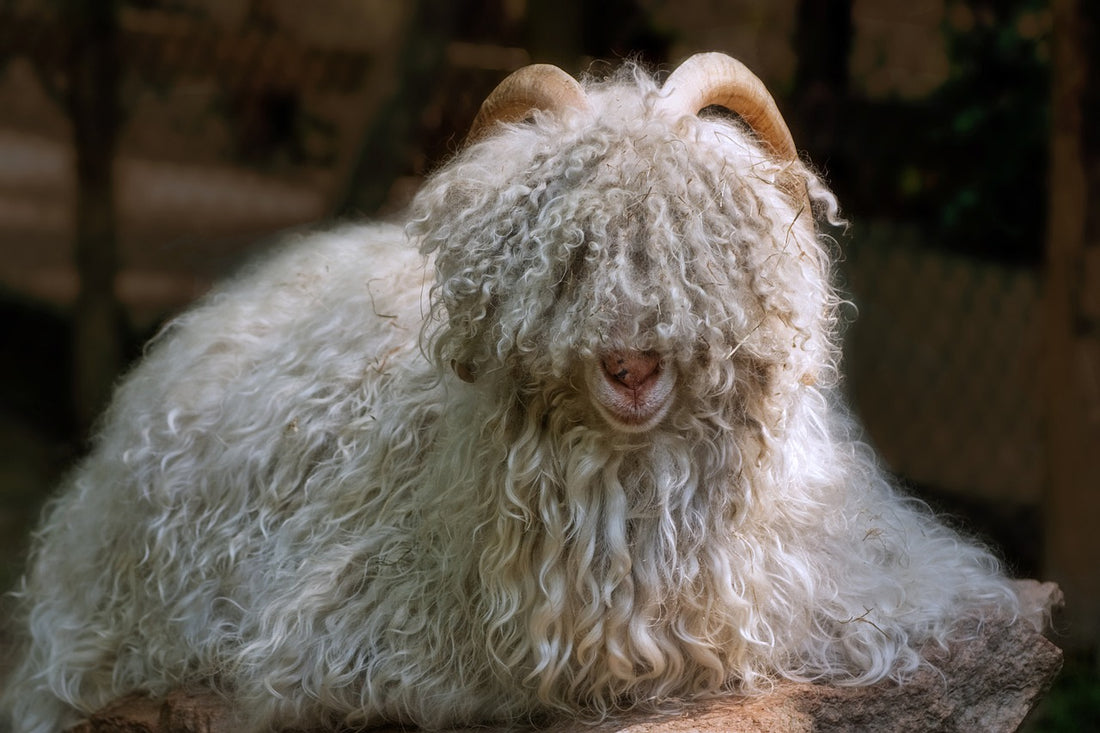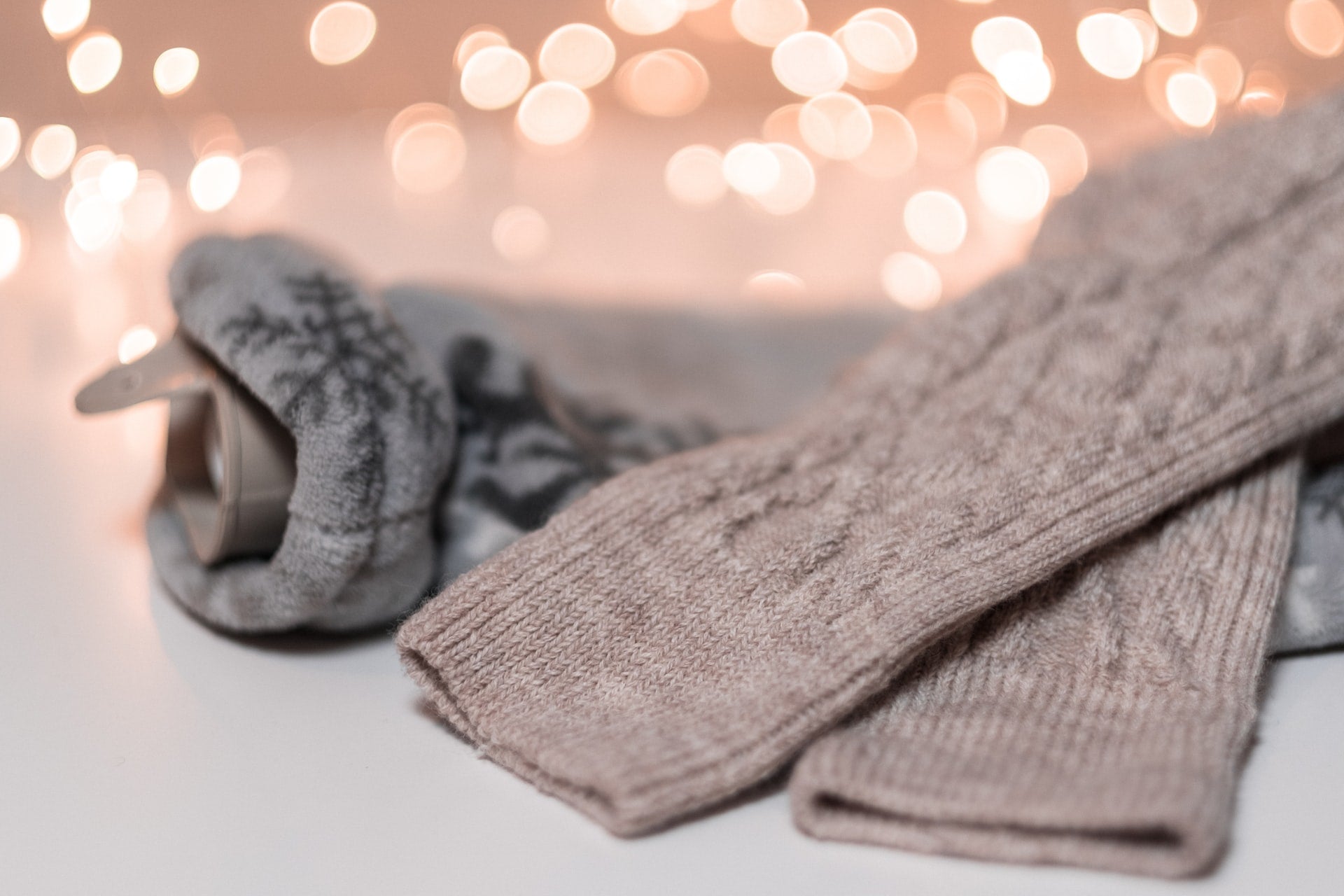By a country mile, cashmere is one of the world’s most desirable materials. Reassuringly rare and exclusive, cashmere is synonymous with super-premium clothing that takes comfort to extremes.
But for all its softness, warmth and aesthetic appeal, cashmere demands a little care and attention in return. Keeping your cashmere clothing in pristine condition is possible, but not if you treat it like any other conventional material.
After all, there really is nothing conventional about cashmere – the king AND queen of fabrics.
What exactly is Cashmere?
Cashmere is a marvel for the simple reason that its properties are 100% unique. Even with the most advanced manufacturing techniques in the world, it is impossible to come close to replicating true cashmere.
The material is produced using the hair of the cashmere goat – a species regularly forced to withstand temperatures as cold as -30°C. To survive these temperatures, their unique coat consists of two layers - the outer layer (guard hair) and the undercoat (cashmere).
The outer layer protects the goat from extreme weather conditions, comprising course material with densely packed fibres. Underneath, the ultra-fine undercoat provides highly efficient insulation, keeping the goat warm in even the coldest temperatures.
It is this super-soft undercoat that is used to manufacture cashmere, which is carefully removed from goats by hand when they begin moulting for summer. Better yet, the outer layer is left intact, and the animals are in no way harmed during the collection process.

What’s So Special About Cashmere?
Once the fibres have been carefully washed and dried, the resulting material is the luxurious, covetable cashmere.
Not only is cashmere one of the softest fibres known to man, but the fibres themselves are actually hollow. This makes it incredibly lightweight and further enhances its insulating properties. As a bonus, cashmere is also naturally antimicrobial and is therefore highly hygienic.
Combined with the long and laborious process of obtaining and preparing the fibres, cashmere manifests as a high-priced commodity for a good reason. One that justifies every penny and more, taking everything that’s great about wool to an entirely new level.
Is Cashmere Warmer Than Other Wool?
The short answer is yes, but that of course depends on the garment in question. Remember, cashmere is still technically a type of wool, too. The thickness of the materials and general design will always play a role in determining how warm any clothing is.
Still, you need only look at the origin of cashmere – those bold goats withstanding teeth-chatteringly low temperatures of -30°C. That alone should be enough to show you that cashmere is indeed several times warmer than wool.
Plus, with the added bonus of also being lighter and finer, you don’t need as much of it to achieve the same level of warmth.
How Should Cashmere Socks Be Washed?
By hand and using cool water. Never toss your cashmere socks in a washing machine or a tumble dryer under any circumstances.
This is where cashmere clothing ownership becomes slightly less glamorous, demanding a fair amount of TLC in return. Though carefully hand washing and flat drying your cashmere socks is really a small price to pay, considering what you get out of the deal in return.

How Should I Care for My Cashmere Socks?
Keeping your cashmere socks in pristine condition doesn’t have to be difficult. In fact, it’s all about keeping things simple and avoiding the temptation to take shortcuts.
Pre-Washing Advice
A few pointers for taking care of cashmere before washing them:
- If it could cause a stain, deal with it immediately, don’t let it dry. And don’t make the mistake of using any conventional stain removers or harsh chemicals.
- If you can wear your cashmere socks with soft, comfortably slippers, do it. Limiting your cashmere’s exposure to the surfaces you’re walking on is always a wise move (provided it’s practical – safety first).
- Be cautious of anything that could catch or snag your cashmere socks, as the damage caused will most likely be irreparable. Regular manicures or pedicures are a great way to prevent excessive wear, snags and ladders.
Washing Advice
As for washing your cashmere socks, here’s a brief overview of our preferred approach for guaranteed happy results:
- Above all else, follow the guidelines provided by the manufacturer to the letter.
- Never use a washing machine – even if it has a setting for ‘delicates’, or a ‘hand washing’ mode. It could still be too rough to care for the fragile fibres.
- Hand-wash your cashmere socks carefully in cool water. Use either a specialist cashmere washing liquid or a sensitive non-biological hand wash.
- Avoid soaking your socks when washing them. You should also not scrub them aggressively or allow them to become twisted up at any time.
- After washing gently for a few minutes, rinse your cashmere socks in a bowl of clean lukewarm water.
- Gently squeeze out the excess water – don’t wring them out under any circumstances.
Drying Advice
With your cashmere socks now nice and clean, you can set them out to dry:
- Gently reshape the socks (if necessary) while they are still wet.
- Lay the socks flat out to dry in a warm and dry place. Keep them away from direct sunlight or nearby heat sources.
- Never hang your socks to dry in the conventional way. And, no matter how desperately you want them dried fast, never put cashmere socks in a tumble dryer.
Storage Advice
First tip: moths love cashmere. And not in the way you or I love it. They love to eat it. So, for ultimate protection and longevity, add lavender bags or cedar balls into your drawers to keep those pesky moths away.
Many people damage their cashmere socks and cause them to wear down far quicker than they should because of one simple mistake - balling them up.
The best way to store your socks is to gently roll each pair like a roulade, then store them safely in your drawer.
Why do my cashmere socks ‘bobble’?
Some call it bobbles or bobbling, others label it as 'pilling'. Either way, it's the same phenomenon and it's perfectly normal, nothing to do with quality.
Pilling (that's its technical name), naturally occurs to any natural fibre used in clothing. It happens because of how these fibres are turned into yarn - some lay the same way, others twist them together. This process means some fibres will always 'stick out', and cashmere is no different.
When you wear clothes with natural fibres, the sticky-out fibres can knot together and create pilling. How significant the pilling you see is will vary, depending on things like the dye used, the way the item was created, or the way you've worn the clothing.
Pilling, bobbling, is absolutely normal. So normal that it's expected. If you're washing your cashmere correctly, that won't cause/worsen the effect. However, using conditioners can exaggerate the situation.
How do I remove bobbles from my cashmere?
Easily! You can remove them by hand or with a specially designed cashmere comb or de-fuzzing brush. In fact, doing this can actually help to soften your cashmere's silky smoothness even more.
Yes, that leaves you with even nicer cashmere in the long run!
What About Dry Cleaning?
Some dry cleaners offer a specialist service for cashmere garments, which can be great for keeping them clean while preserving their desirable properties. However, standard dry cleaning is not suitable for cashmere clothing, or some types of cashmere blends.
Always check with your preferred dry cleaner, before entrusting them with your most treasured cashmere possessions.
How Long Do Cashmere Socks Last?
This depends entirely on how you use them, how often you use them and where you use them. For example, few manufacturers would recommend donning a pair of premium cashmere socks and heading out for a hike.
Pure cashmere is not the most durable or hardwearing of materials – certainly not a replacement for your everyday socks.
Instead, pure cashmere socks are typically recommended for moments of pure personal indulgence. Just like super-comfy slippers, you wear them when you’re not actually planning on doing a great deal at all. Use them as they were designed to be used and they will proudly serve you indefinitely.
What About Cashmere Blends?
All cashmere blends are unique, in accordance with their composition of various materials. Nylon and merino wool are often added to cashmere to create blends, which can be more durable than pure cashmere.
Always check the label for the manufacturer’s instructions on cleaning and caring for a blend – particularly where cashmere is included in the mix.
For more information, or to discuss the benefits of cashmere clothing in more detail, contact the SocksFox team today.










 (
(